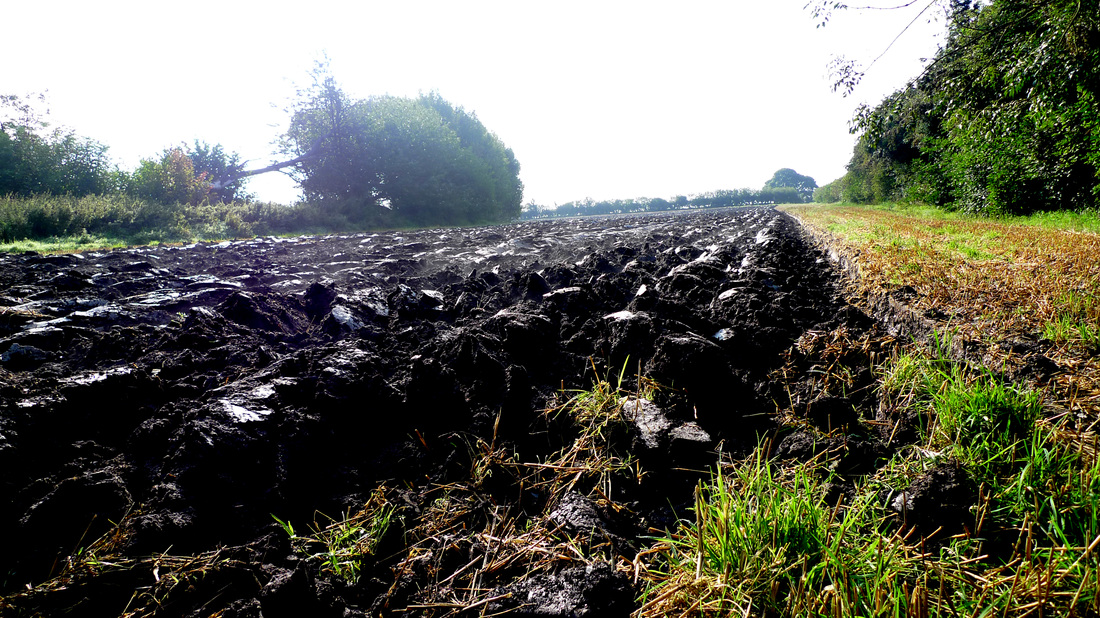We set off for a brand new medieval permission that had been harvested recently. The weather looked good as there wasn't a cloud in the sky.
Sure enough we got there and the weather was still good... but...... this sight of our new site greeted us.....
The other fields were in the same condition!
The two Déus' were set up with small coils and GMP mode as standard.
GB was 'tracking' for Rob and 85 for me.
The Gold Maxx Power had it's brand new tiny NEL Sharpshooter coil attached and set up for however Steve uses it. All finds were at a maximum of 5 inches at the deepest.
Rob and Steve decided to wobble around on the ploughed area where as I decided to whimp out and do the edges.
Steve and Rob found worked flints, large Civil War musket balls and a cracking early decorated medieval spindle whorl.
The edge of the field had more Civil War musket balls and a surface find of a hammered coin of Charles 1st which was broken into three pieces which would have been in a nice condition if it was intact.
At least we knew that this permission may produce some amazing medieval artefacts once it has been rolled and seeded.
After an hour we decided that we couldn't survey any further.
Luckily enough, we'd passed another brand new permission on the way here that was in stubble, so a quick text to the land owner and the reply was just one word..... "Yes".
We packed up and set off for permission number two which may be predominantly Romano-British.
The images for site No 1 can be seen here.
Site No 2
We arrived at the second site with the field being very large at 75 acres but we were only interested in surveying a 400ft square section that was adjacent to a permission we acquired in January this year which produced lots of Roman and some Saxon artefacts.
The machines were set up exactly as above.
We detected towards the targeted area we had in mind to survey and recovered a few pre-decimal coins in amongst some green waste. Thankfully it wasn't too bad.
As soon as we arrived at the survey area we started to recover Romano-British artefacts as expected.
A lovely Roman spoon with a large suspension loop and lead still in its bowl, was recovered. Amongst the eight Roman coins was a lovely example of a 'quinarius' of Allectus which was an experimental denomination and only issued during this reign.
A lead ingot weighing in at 216 grams and a huge circular lead peice weighing in at 926 grams were just some of the lead items recovered.
A chinese coin and pieces of Roman pottery were added to the montage of finds from this site.
Images of the finds for site No 2 can be seen here.
All in all it turned out ok thanks to our brand new back up Roman site.
Now were're scratching our heads as to where we are going on our next foray as site No1 may have been rolled. If not, there's another brand new site that we should have 'phoned the landowner in mid-August but we're not sure what historical periods would show up there?


 RSS Feed
RSS Feed
